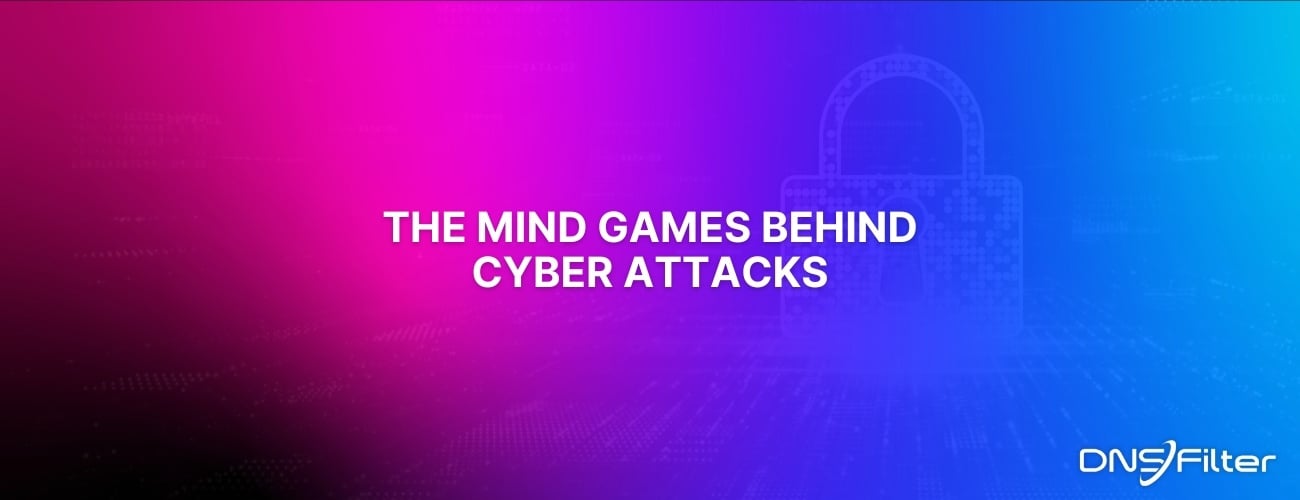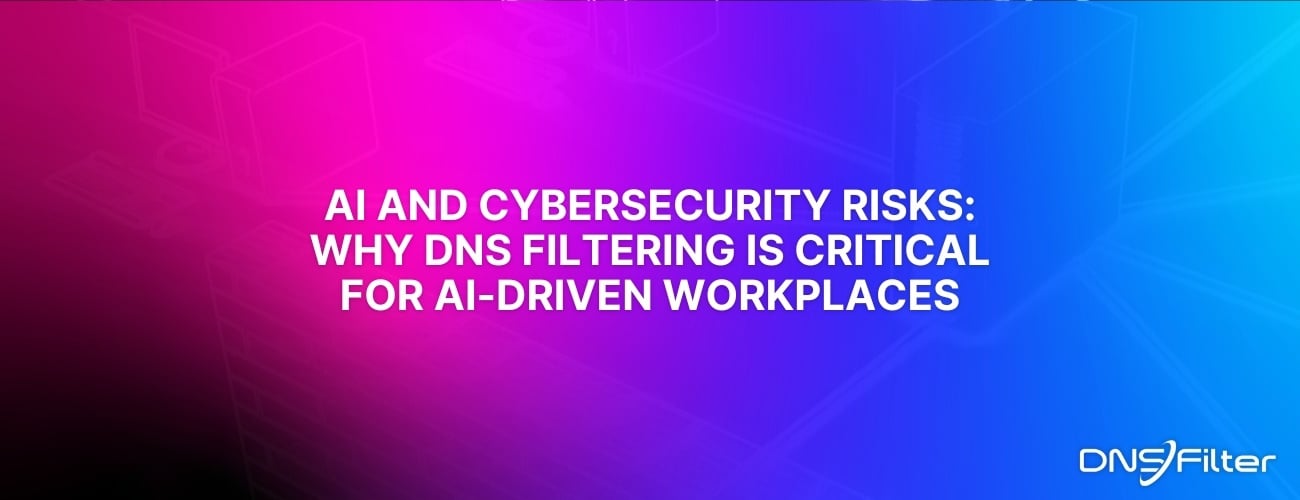Share this
The Intersection of 5G, Public Wi-Fi, and Network Security: Who’s at Risk?
by Kory Underdown on Jun 3, 2024 2:50:21 PM
The transition from 4G to 5G is revolutionizing the way we connect and communicate, promising unprecedented speed, capacity, and low latency. However, this evolution also brings its own set of challenges, particularly concerning network coverage and security.
As businesses and consumers increasingly rely on public Wi-Fi to bridge the gaps left by 5G's coverage limitations, the need for robust network security measures becomes more critical than ever. This article explores the intersection of 5G, public Wi-Fi, and network security, providing insights and strategies to help network administrators, security professionals, CTOs, and MSPs navigate this complex landscape.
This article is for:
| Network Administrators | Network Security Professionals | Chief Technology Officers (CTOs) | Managed Service Providers (MSPs) |
| Your pain points are managing complex network infrastructures, ensuring connectivity, and maintaining security. Transition to 5G brings new complexities in coverage and signal penetration, requiring innovative solutions for network resilience and performance. | Your role is to address vulnerabilities in new and legacy networks, protect against cyber threats, and ensure compliance with security regulations. The rise of public Wi-Fi adds complexity, requiring proactive risk mitigation strategies. | Your pain points are managing 5G adoption, budget constraints, and aligning tech with business goals. Your job is to ensure 5G security without compromising, transitioning from 4G, while mitigating risks. | You’re charged with delivering comprehensive security solutions to their clients, staying ahead of emerging threats, and ensuring reliable service delivery. With increased public Wi-Fi use and 5G security challenges, implement robust measures like DNS filtering to protect networks and build trust. |
Understanding 5G and its coverage limitations
What is 5G?
5G, the fifth generation of mobile network technology, represents a significant leap forward from its predecessor, 4G. It is designed to deliver faster speeds, greater capacity, and lower latency. This means that users can download large files almost instantly, enjoy seamless video streaming, and experience enhanced connectivity for a wide range of applications, from virtual reality to autonomous vehicles. The increased capacity of 5G networks allows for more devices to be connected simultaneously without compromising performance, which is essential for the growing number of IoT devices.
Coverage issues with 5G
Despite its impressive capabilities, 5G technology comes with its own set of challenges, particularly concerning coverage. One of the primary issues is the short range of 5G signals. Unlike 4G, which operates on lower-frequency bands that can cover larger areas and penetrate buildings more effectively, 5G primarily uses higher-frequency bands, known as millimeter waves. These waves have a much shorter range and are significantly more susceptible to physical obstructions such as walls, trees, and even weather conditions.
- Short Range and Poor Penetration: The high-frequency millimeter waves used by 5G offer greater speed and capacity but struggle with long-distance travel and penetrating indoor environments. This makes 5G coverage less reliable indoors and in densely built areas.
- Comparison to 4G: While 4G signals can easily cover wide areas and penetrate buildings, 5G's millimeter waves require a dense network of small cells and antennas to provide consistent coverage. This infrastructure is often expensive and time-consuming to deploy.
- Real-life Implications: For consumers and businesses, this means that while 5G can offer superior performance in open and well-covered areas, its reliability diminishes indoors and in areas with significant physical obstructions. Retail stores, office buildings, and other indoor environments may continue to rely on 4G or enhanced Wi-Fi networks to ensure stable connectivity.
Addressing these challenges requires strategic deployment of network resources and an emphasis on complementary technologies such as public Wi-Fi to fill the gaps left by 5G.
The role of public Wi-Fi in the 5G era
Increased adoption of public Wi-Fi
As 5G technology rolls out, its coverage limitations have highlighted the continued importance of public Wi-Fi networks. In areas where 5G signals struggle to reach or penetrate, public Wi-Fi provides a reliable alternative to ensure seamless connectivity. This is particularly true in indoor environments, such as shopping centers, hotels, restaurants, and airports, where the demand for stable internet access remains high.
Necessity of public Wi-Fi
In regions with poor 5G coverage, public Wi-Fi networks become essential. They fill the gaps left by 5G, offering a dependable connection where high-frequency signals cannot reach effectively. Public Wi-Fi is often the go-to solution for users who need reliable internet access in these challenging areas.
Convenience in various settings
The convenience of public Wi-Fi cannot be overstated. Whether in a bustling shopping mall, a cozy café, or a business conference at a hotel, public Wi-Fi networks provide the connectivity that users have come to expect. This widespread availability supports various activities, from casual browsing to critical business operations.
The security perspective
However, the increased reliance on public Wi-Fi networks also brings significant security concerns. Public Wi-Fi is often less secure than private networks, making it a target for cyber threats. Users connecting to these networks may unknowingly expose their devices to risks such as data breaches, malware, and phishing attacks.
|
Security Challenges: |
DNSFilter Insights: |
|
Public Wi-Fi networks are inherently vulnerable due to their open nature. Cybercriminals can exploit these networks to intercept data, launch attacks, and gain unauthorized access to devices. This is especially concerning in areas with high foot traffic and diverse user groups. |
According to a study by DNSFilter, 84% of test domains on public Wi-Fi at airports included accessible malicious sites. This statistic underscores the critical need for enhanced security measures to protect users from potential threats. |
"In today's connected world, avoiding public and guest Wi-Fi networks is often not an option, mostly because 5G network building penetration is relatively poor, which means indoor coverage is lacking."

Greg Delaney, DNSFilter
Statistics and trends
What’s more, the statistics and trends show the rise in public Wi-Fi usage.
| 35% | 40% |
| of people access public Wi-Fi three to four times a month | of respondents had their information compromised while using public Wi-Fi |

Security concerns in LTE, 4G, and 5G networks
Comparing LTE, 4G, 5G, and public Wi-Fi security
| Network Type | Key Vulnerabilities | Security Improvements | Common Threats | Example Incidents |
| LTE |
- IP-related vulnerabilities - Older device vulnerabilities - Susceptible to protocol exploits |
- Regular updates - Improved encryption methods |
- DDoS attacks - Data breaches - IP spoofing |
|
| 4G |
- Similar to LTE - Increased attack vectors with IP-based protocols |
- Enhanced encryption - More frequency security patches |
- Phishing attacks - Data threft - Network intrusions |
|
| 5G |
- Larger attack surface due to IoT - Short-range limitations leading to increased deployment complexity |
- Enhanced security protocols - Better encryption standards - Network slicing for security |
- IoT device hijacking - Data interception - Botnet attacks |
|
| Public Wi-Fi |
- Lack of encryption - Susceptibility to Man-in-the-Middle (MitM) attacks - Unsecure captive portals |
- Implementation of DNS filtering - VPN usage |
-MitM attacks - Malware distribution - Phishing |
- DNSFilter Study |
LTE and 4G Security Issues
Although LTE and 4G networks have provided reliable connectivity and robust performance for years, they are not without their security vulnerabilities. As these networks age, the challenges associated with maintaining their security become more pronounced.
- IP-Related Vulnerabilities: LTE and 4G networks are susceptible to various IP-related vulnerabilities. These include spoofing attacks, where malicious actors can impersonate legitimate users, and session hijacking, where attackers can take over an active session between two devices.
- Outdated Devices: Many devices still in use today are not updated regularly, leaving them exposed to known security flaws. These outdated devices can serve as entry points for cyber attackers, compromising the entire network.
- Examples of Past Breaches: Articles on 4G security from Mpirical, Tandfonline, and WilsonPro provide detailed analyses of these vulnerabilities and past breaches, offering valuable insights into the evolving threat landscape.
5G security enhancements and challenges
The introduction of 5G technology brings significant security improvements, yet it also introduces new challenges that must be addressed to ensure a secure network environment.
Security ImprovementsEnhanced Encryption: 5G networks implement stronger encryption standards to protect data as it travels across the network, making it more difficult for attackers to intercept and decipher communications. |
New Security ChallengesIncreased Attack Surface: The proliferation of IoT devices connected to 5G networks expands the potential attack surface. Each connected device represents a potential entry point for cyber attackers.Complexity of 5G Architecture: The advanced architecture of 5G, while offering numerous benefits, also introduces complexity that can be exploited by attackers if not properly managed. IoT Vulnerabilities: Many IoT devices lack robust security features, making them prime targets for cyberattacks. As these devices become more prevalent in 5G networks, ensuring their security is paramount. |
Resources
Insights from Comparitech, Utulsa, and UCTel explore the nuances of 5G security, providing in-depth discussions on both the enhancements and the challenges.
Vulnerabilities of public Wi-Fi
Public Wi-Fi networks remain a crucial part of the connectivity landscape, particularly as they complement 5G. However, they are also rife with security risks that need to be managed carefully.
Common Security Risks |
||
|
Data Interception: Public Wi-Fi networks are susceptible to man-in-the-middle attacks, where attackers intercept data being transmitted between the user and the network. |
Malicious Hotspots: Cybercriminals can set up rogue hotspots mimicking legitimate public Wi-Fi networks, tricking users into connecting and exposing their data. |
Lack of Encryption: Many public Wi-Fi networks do not use encryption, making it easier for attackers to access unprotected data. |
Examples of threats
According to a study by DNSFilter, 84% of test domains on public Wi-Fi at airports included accessible malicious sites. This highlights the significant risk of connecting to public Wi-Fi networks without adequate security measures.
Enhancing network security with DNS filtering
The importance of securing public Wi-Fi
As reliance on public Wi-Fi continues to grow, ensuring the security of these networks becomes increasingly critical. Public Wi-Fi networks are often the first point of entry for cyber attackers looking to exploit vulnerabilities and steal sensitive information. Therefore, providing robust security protection for public Wi-Fi users is essential to safeguard their data and maintain trust in these networks.
Protective DNS as a key solution
One effective way to enhance the security of public Wi-Fi networks is through the implementation of protective DNS filtering. Protective DNS works by blocking access to malicious domains and preventing users from visiting sites known to host malware or phishing schemes. By filtering out these threats at the DNS level, businesses can significantly reduce the risk of cyber attacks and protect their users.
The transition from 4G to 5G brings new challenges in network coverage and security. The increased reliance on public Wi-Fi networks to bridge the gaps left by 5G's coverage limitations underscores the importance of securing these networks. Common security risks associated with public Wi-Fi, such as data interception and malicious hotspots, pose significant threats to users and businesses.
Additional resources
Learn more about DNS filtering and explore this article on the benefits of protective DNS for safer public Wi-Fi.
For businesses looking to enhance their network security with DNS filtering solutions, schedule a personalized demo with DNSFilter here.
Share this
 Artificial Intelligence in Cybersecurity
Artificial Intelligence in Cybersecurity
The term “artificial intelligence (AI)” was first coined in 1956. While progress stalled for many years, we can thank IBM for sparking real interest in AI as viable technology: First in 1997 when the computer Deep Blue defeated a chess champion and again in 2011 when Watson won Jeopardy!
 The Mind Games Behind Cyber Attacks
The Mind Games Behind Cyber Attacks
Hackers have long understood that the most sophisticated firewall is no match for a well-placed psychological trick. While many focus on the technical prowess of cybercriminals, the real magic often lies in their ability to manipulate human behavior. By exploiting our natural tendencies and cognitive biases, hackers can slip past even the most robust security systems. It's not just about cracking codes; it's about cracking the human psyche.
 AI and Cybersecurity Risks: Why DNS Filtering is Critical for AI-Driven Workplaces
AI and Cybersecurity Risks: Why DNS Filtering is Critical for AI-Driven Workplaces
Artificial intelligence is transforming business operations, automating everything from customer service to data analysis. But with these advancements come new security challenges. AI-driven cyber threats are becoming more sophisticated, enabling attackers to automate phishing campaigns, generate malware, and exfiltrate sensitive data at scale. Without proper safeguards, AI tools can unintentionally leak corporate secrets or connect to malicious ...


